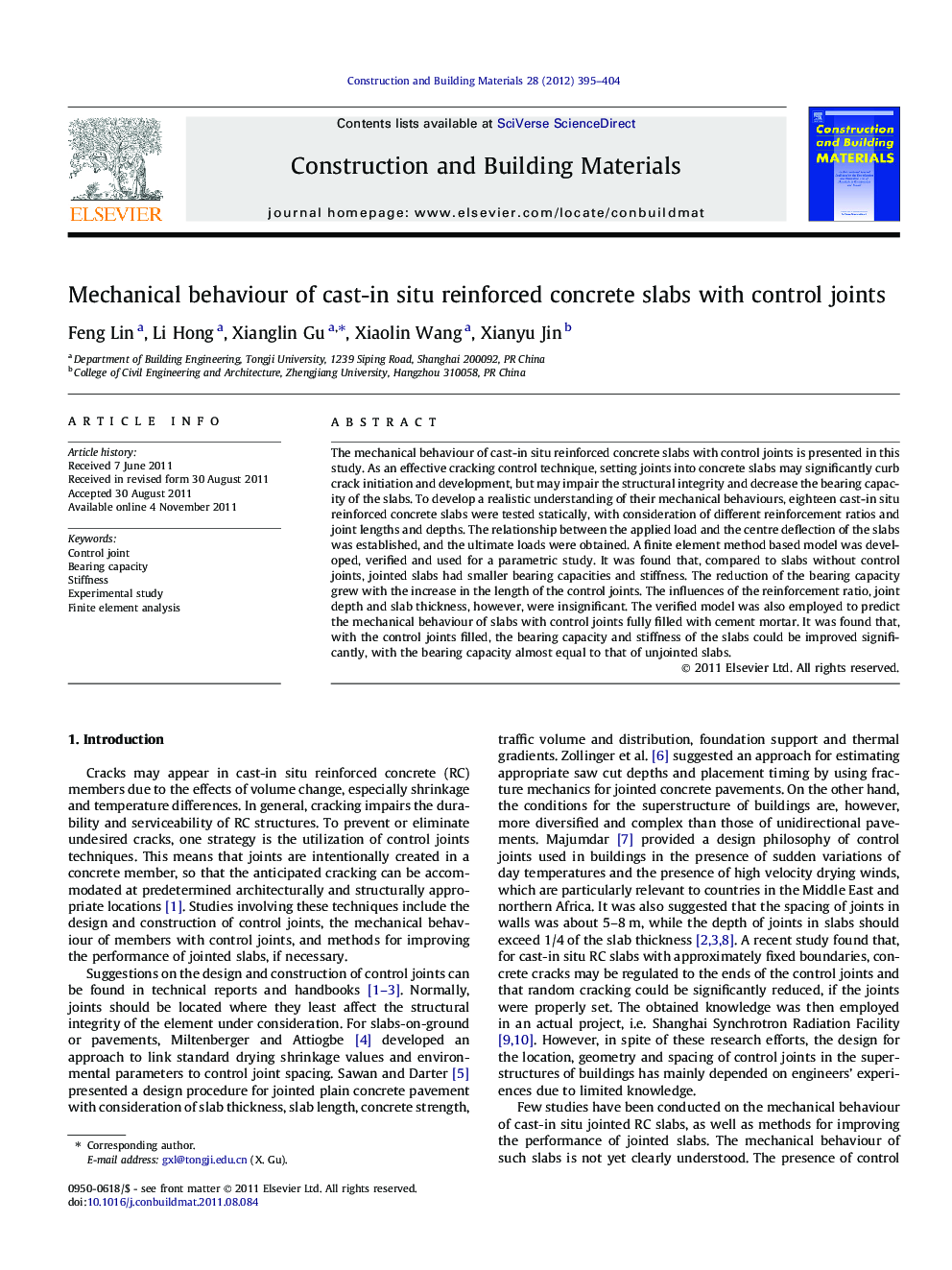| Article ID | Journal | Published Year | Pages | File Type |
|---|---|---|---|---|
| 259590 | Construction and Building Materials | 2012 | 10 Pages |
The mechanical behaviour of cast-in situ reinforced concrete slabs with control joints is presented in this study. As an effective cracking control technique, setting joints into concrete slabs may significantly curb crack initiation and development, but may impair the structural integrity and decrease the bearing capacity of the slabs. To develop a realistic understanding of their mechanical behaviours, eighteen cast-in situ reinforced concrete slabs were tested statically, with consideration of different reinforcement ratios and joint lengths and depths. The relationship between the applied load and the centre deflection of the slabs was established, and the ultimate loads were obtained. A finite element method based model was developed, verified and used for a parametric study. It was found that, compared to slabs without control joints, jointed slabs had smaller bearing capacities and stiffness. The reduction of the bearing capacity grew with the increase in the length of the control joints. The influences of the reinforcement ratio, joint depth and slab thickness, however, were insignificant. The verified model was also employed to predict the mechanical behaviour of slabs with control joints fully filled with cement mortar. It was found that, with the control joints filled, the bearing capacity and stiffness of the slabs could be improved significantly, with the bearing capacity almost equal to that of unjointed slabs.
► Mechanical behaviour of jointed concrete slabs was studied. ► Effects of influential factors on mechanical behavior of jointed slabs were revealed. ► Mechanical behaviour of jointed slabs filled with cement mortar was predicted.
